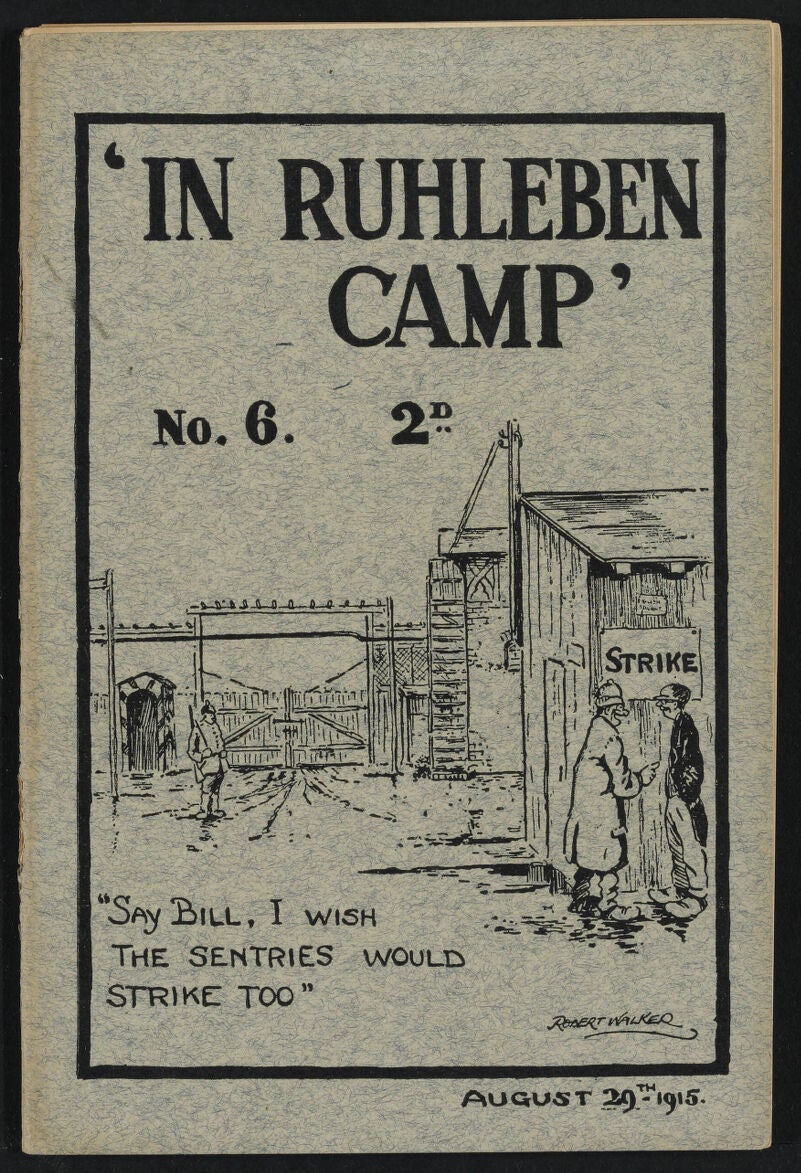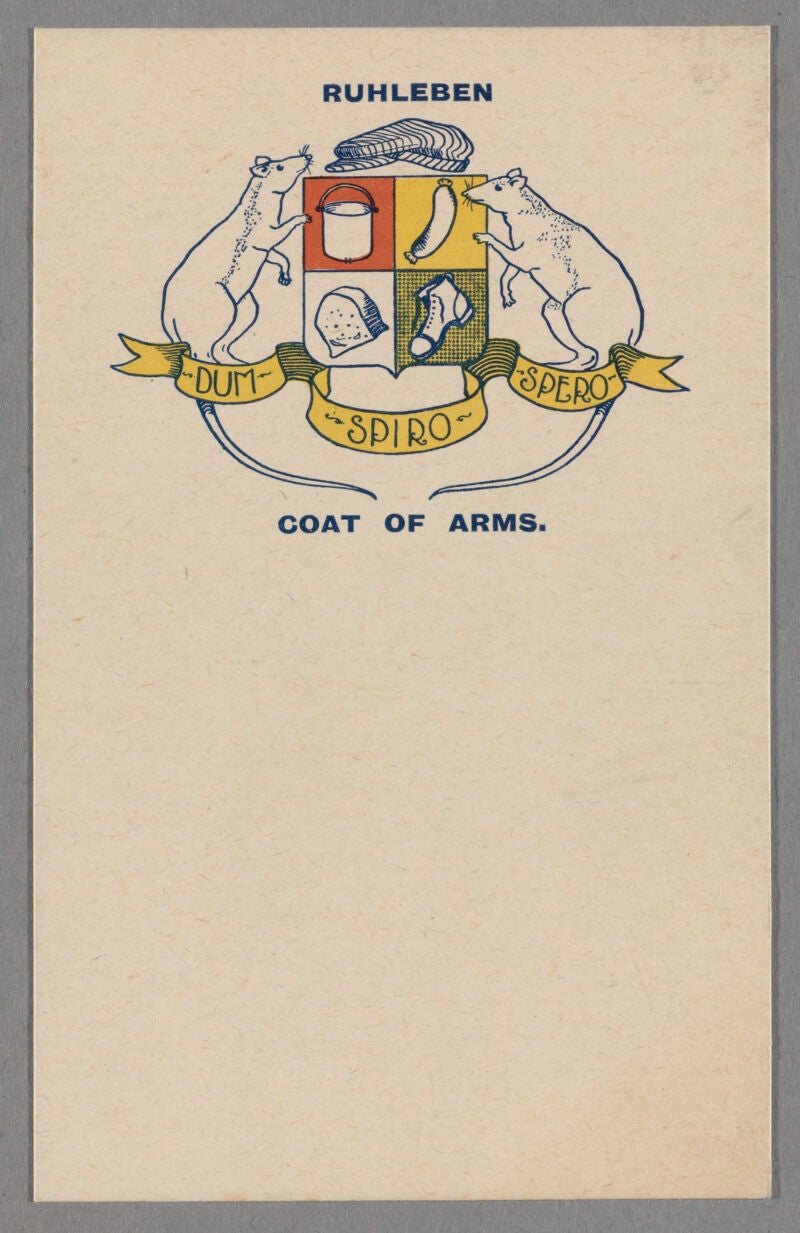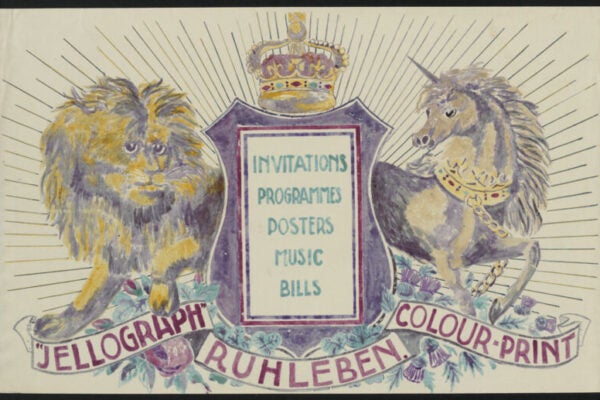A brief history of Harvard Law School Library Ruhleben exhibits
The original Ruhleben Internment Camp exhibit, “Ruhleben: A British Community in Wartime Germany” was on display in the Harvard Law School Library’s Caspersen Room from Sept. 8, 2011 through Feb. 24, 2012. In the fall of 2011, a more extensive online exhibit, “Ruhleben: A Digital Exhibit” was created using Omeka, an “open source web-publishing platform for the display of library, museum, archives, and scholarly collections and exhibitions.” The Omeka site for “Ruhleben: A Digital Exhibit,” which can still be viewed via the Wayback Machine, was retired in 2022. As part of the Harvard Law School Library’s transition to using CURIOSity as its platform for digital exhibits, HLSL’s Historical & Special Collections staff have migrated the online exhibit to CURIOSity

The Ruhleben Collections
Ruhleben, Germany’s World War I civilian internment camp, operated from 1914-1918, during which time countless British civilians were interned. The Ruhleben materials featured in the migrated digital exhibit come from two archival collections housed at the Harvard Law School Library: (1) the Maurice L. Ettinghausen Collection of Ruhleben civilian internment camp papers, 1914-1937 and (2) the John Masterman Collection of Ruhleben British Civilian internment camp documents 1914-1919.
Maurice L. Ettinghausen was interned at Ruhleben for the full four years of its existence (Nov. 1914 to Nov. 1918). His collection includes memorabilia, photographs, drawings, and printed material representing camp life. His collection, comprising approximately 6.7 linear feet of material, was purchased by the HLS Library in 1930.
It is unclear why Eldon R. James, the Librarian in 1930, purchased the Ettinghausen collection. There is no correspondence or other documentation concerning the acquisition. The Special Collections unit of the HLS Library did not exist until 1986, and with no apparent association to anything the library was collecting at the time, one can only speculate about why James purchased the collection. One suggestion is that the society created at the camp was founded upon rules and regulations, law and order, which provided the necessary infrastructure for the Ruhleben community to develop. As such, the collection is an interesting addition to the legal materials already held by the library.
The other Ruhleben collection was donated by Sir John C. Masterman in 1974. Masterman was also interned at the camp for the duration of its existence. This collection is much smaller than Ettinghausen’s (about 1 linear foot) but includes lecture notes for classes he taught and notebooks for classes he took.

Explore the new site

The new CURIOSity site, Ruhleben: A British Community in War-Time Germany, provides background on the Ruhleben collections and the history of the exhibits. It also considers the terms used to describe Ruhleben, including the definition of “concentration camp” (as opposed to “internment camp”), as well as the legal status of civilian internees.
The bulk of the digital exhibit is separated into five “curated features” organized around a thematic aspect of the camp’s history, highlighting a range of manuscript and visual materials from the Ettinghausen and Masterman collections:
- The first section, Ruhlebenites, explores the diverse identities and backgrounds of the Ruhleben population, with a specific focus on Black, Jewish, and pro-German internees.
- Drawing on HLSL’s robust collection of maps and other visual materials documenting the Ruhleben internment camp, Camp Layout paints a picture of what the camp looked like, and describes the structure and conditions of the barracks in which internees lived.
- Camp Administration gives an overview of the administrative activity of the camp, including military, civil, and police functions, as well as the day-to-day workings of the camp kitchens, hot water house, and mail delivery system.
- Sports details internees’ gratifying involvement in playing and watching sports, such as football, cricket, boxing, club swinging, wrestling, and more.
- Lastly, Arts & Education provides evidence of a rich cultural life at Ruhleben, through internees’ participation in lectures, debates, theatrical performances, writing, musical performances, and visual art making.
Filed in: Historical & Special Collections
Contact Us
phone: 617-495-3455
email: asklib@law.harvard.edu
library website: hls.harvard.edu/library
Stay Connected
Library Innovation Lab (LIL) Blog
Instagram @hlslibrary
Facebook @hlslibrary
Et Seq blog (archived)
